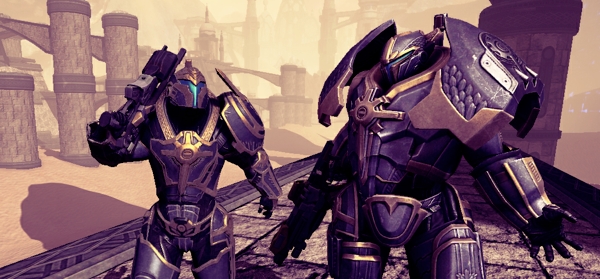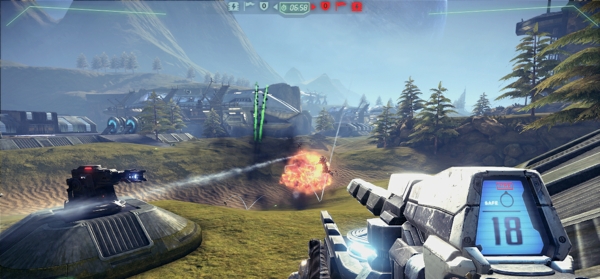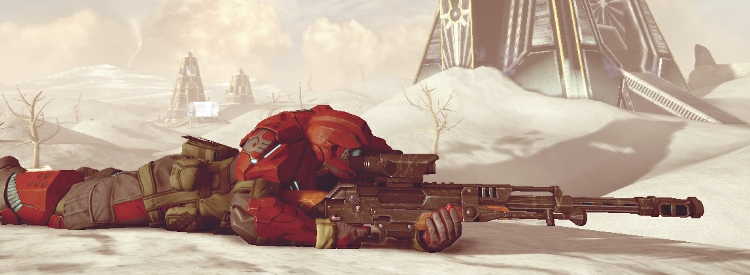Most of our game performance reviews feature triple-A blockbusters, but we're changing pace for this write-up as we examine Tribes: Ascend, a free-to-play shooter released by Hi-Rez Studios on April 12. The Tribes franchise has deep roots in multiplayer shooter history, with Starsiege: Tribes making huge waves in the late 90s and two other PC entries following in 2001 and 2004. The series has lain dormant since, but Hi-Rez hopes to revive the classic shooter with a 21st century monetization scheme.
Considered a successor to Tribes 2, Tribes: Ascend embraces its heritage by incorporating the same fast-paced combat, tons of maps, weapons, vehicles and unique traversal mechanics. At the same time, it adds a new class-based system. There are nine classes spread across three armor tiers (light, medium and heavy) with switchable load-outs that have different gear and deployables. Players can either unlock weapons and such through in-game experience, or by purchasing them outright with real money.

Despite its freemium additions, reviews from both users and critics seem to be overwhelmingly positive – glowing, even. The title has straight positive feedback on Metacritic and our own Product Finder 84 . We imagine nostalgia-enamored old school gamers wrote some of the reviews, but they can't all be wrong. Feel free to share your opinions in the comments, but we'll focus on the game's performance from here on.
Tribes: Ascend is built on a modified Unreal Engine 3 and interestingly, it shares some similarities with UT3. For instance, it lacks built-in voice communication though it lets players issue audible commands to each other. Anyhow, back on topic: the game only supports DirectX 9 graphics but the recommended specs are relatively high, calling for a GeForce GTX 560 or Radeon HD 6950 with a quad-core processor. Considering those requirements, we're hoping the game gives our test hardware a nice workout...
We'll spare you the trouble of counting the list below: we're testing 24 AMD and Nvidia graphics cards across all price ranges. The latest official drivers were used for each. We installed an overclocked Intel Core i7-2600K in our testbed to remove any CPU bottlenecks that could influence high-end GPU scores.

We used Fraps to measure frame rates during a minute of gameplay from Tribes: Ascend Training, Target Practice mode. This ensured easily reproducible results versus testing in an actual multiplayer game, which wouldn't remain the same over testing two dozen graphics cards at three resolutions.
Test System Specs
|
|
Tribes: Ascend is very customizable if you're into turning knobs and flipping switches, but there are also five quality presets: minimal, low, medium, high and very high. We ran all tests using very high quality settings. Finally, we tested at three common resolutions: 1680x1050, 1920x1200 and 2560x1600.
